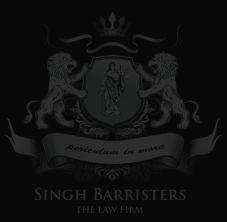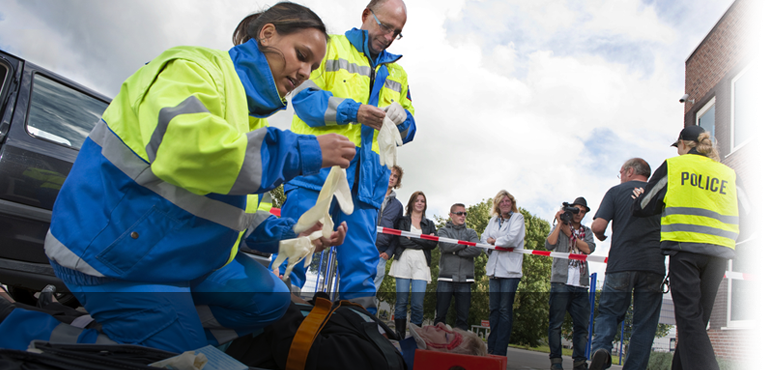| Toll Free : 1844 495 7333(injury hotline- new cases only) | |
| Text a Personal Injury Lawyer 24/7 and get instant help.TM (416 931 5015) | |
| Head Office : 905 495 7333 |
Pain and Suffering – Can They Be Included in Your Car Accident Claim?
October 20, 2015Following a car accident, Canada’s no-fault insurance policy provides statutory benefits for all those involved in the accident. However, in reality, the insurance may not cover many medical, social and psychological aspects of the victim’s condition. Additionally, most accidents are caused by the fault or negligence of another person. Hence, the victim or next of kin, is allowed to file a claim for compensation, based on the nature of injury and extent of disability and damages and also for pain and suffering.
What is “Pain and Suffering” in Legal Terms?
Under Canadian laws, there is a no-fault premise in the case of accidents, which means that statutory benefits are provided by the state regardless of whose fault the accident is. However, most accidents are in fact caused by the negligence or fault of another person and victims are entitled under the law of torts to claim compensation from the opposite party.
There are broadly two different types of damages that can be claimed after an accident – economic and non-economic.
Economic damages include: medical and hospitalization expenses, car repair costs, rehabilitation, loss of income both present and future, household maintenance, care-giver expenses, medication, counseling, assistive technology etc.
Non-economic damages include: Pain and suffering, or in other words, the sort of damages that cannot have a dollar value put to them. They include the anguish, severe pain of broken bones, wounds, loss of blood, spinal injuries, disabilities, etc. All accidents have a deep psychological effect on the victim and the family. Additionally, with serious accidents there may be disability or death, fear, anxiety or other mental trauma.
What Are the Constituents of a Pain and Suffering Claim?
Our accident attorneys can assist victims to file a strong claim for pain and suffering in addition to other damages. The pain and suffering claim is based on the extent of injury and its impact on the person/family’s life. It’s important to know that under Canadian laws, there is a cap on the limit of compensation awarded under pain and suffering.
Pain and suffering claims include compensation for:
- Aches due to injuries suffered in the accident
- Temporary/Permanent limitations on normal activities
- Potential shortening of life
- Depression
- Scarring/Disfigurement
- Mental suffering
- Anguish
- Fear
- Anxiety
- Loss of enjoyment of life
- Humiliation
- Shock
- Severe traumas can cause loss of appetite, lack of energy, sexual dysfunction, mood swings, sleep disturbances
- Post-Traumatic Stress Disorder (PTSD)
How Pain and Suffering May Be Calculated By The Legal System
Since no real dollar value can be put on it and each individual suffers in a different way, there are no guidelines for how much to award for pain and suffering. Juries may be instructed to use their common sense and experience while giving a verdict. There are many factors that affect a jury’s award, some of which include whether the plaintiff is credible, honest, consistent, exaggerating claims, has enough data to back the claim etc.
Additionally, the Ontario legislature and the Canadian Supreme Court have set their own parameters. Pain and suffering claims have a cap of $300,000 which is the maximum that can be awarded. This is for catastrophic accidents in which the victim has been rendered paralyzed (quadriplegic) or suffered major brain damage. Multi-million dollar awards for pain and suffering as seen in the United States are not allowed here. Hence, though there are no caps on damages for car accident victims, there are limitations put on pain and suffering claims.
How We Can Assist You
In some courts, unless the victim has died, sustained serious, permanent disfigurement or disability, or serious impairment to a psychological, physical or mental function, claims for pain and suffering may not be entertained. This is known as the “verbal threshold” and if your claim has to pass this threshold, your personal injury lawyer must be able to provide you with a free assessment of your case and explain the various heads of damages that you will be entitled to.
95 percent of cases may not reach the trial stage and are settled out of court between the plaintiff’s legal representatives and the defendant’s insurers/representatives. Here the skill, experience and knowledge of our car accident attorneys can assist you in protecting your rights and ensuring that you get the maximum compensation.
A good option would be a structured payment arrangement, in which the victim receives lifelong periodic payments. This means they don’t have to manage a large sum of money and can receive tax-free payments. Such structured settlements if properly curated by our car accident lawyers can be adjusted for future needs, inflation etc.
If you, your family or a friend has been injured in an accident, please feel free to speak to one of our injury lawyers for a free consultation about how we are able to assist in making a personal injury claim. We consult in all cities across Ontario with a no win no fee guarantee. Our personal injury lawyers have helped victims secure millions of dollars in personal injury cases. Call us Toll Free On our 24/7 Injury Hotline: 1 – 844 495 7333.
Pain and Suffering – Can They Be Included in Your Car Accident Claim?
October 20, 2015Following a car accident, Canada’s no-fault insurance policy provides statutory benefits for all those involved in the accident. However, in reality, the insurance may not cover many medical, social and psychological aspects of the victim’s condition. Additionally, most accidents are caused by the fault or negligence of another person. Hence, the victim or next of kin, is allowed to file a claim for compensation, based on the nature of injury and extent of disability and damages and also for pain and suffering.
What is “Pain and Suffering” in Legal Terms?
Under Canadian laws, there is a no-fault premise in the case of accidents, which means that statutory benefits are provided by the state regardless of whose fault the accident is. However, most accidents are in fact caused by the negligence or fault of another person and victims are entitled under the law of torts to claim compensation from the opposite party.
There are broadly two different types of damages that can be claimed after an accident – economic and non-economic.
Economic damages include: medical and hospitalization expenses, car repair costs, rehabilitation, loss of income both present and future, household maintenance, care-giver expenses, medication, counseling, assistive technology etc.
Non-economic damages include: Pain and suffering, or in other words, the sort of damages that cannot have a dollar value put to them. They include the anguish, severe pain of broken bones, wounds, loss of blood, spinal injuries, disabilities, etc. All accidents have a deep psychological effect on the victim and the family. Additionally, with serious accidents there may be disability or death, fear, anxiety or other mental trauma.
What Are the Constituents of a Pain and Suffering Claim?
Our accident attorneys can assist victims to file a strong claim for pain and suffering in addition to other damages. The pain and suffering claim is based on the extent of injury and its impact on the person/family’s life. It’s important to know that under Canadian laws, there is a cap on the limit of compensation awarded under pain and suffering.
Pain and suffering claims include compensation for:
- Aches due to injuries suffered in the accident
- Temporary/Permanent limitations on normal activities
- Potential shortening of life
- Depression
- Scarring/Disfigurement
- Mental suffering
- Anguish
- Fear
- Anxiety
- Loss of enjoyment of life
- Humiliation
- Shock
- Severe traumas can cause loss of appetite, lack of energy, sexual dysfunction, mood swings, sleep disturbances
- Post-Traumatic Stress Disorder (PTSD)
How Pain and Suffering May Be Calculated By The Legal System
Since no real dollar value can be put on it and each individual suffers in a different way, there are no guidelines for how much to award for pain and suffering. Juries may be instructed to use their common sense and experience while giving a verdict. There are many factors that affect a jury’s award, some of which include whether the plaintiff is credible, honest, consistent, exaggerating claims, has enough data to back the claim etc.
Additionally, the Ontario legislature and the Canadian Supreme Court have set their own parameters. Pain and suffering claims have a cap of $300,000 which is the maximum that can be awarded. This is for catastrophic accidents in which the victim has been rendered paralyzed (quadriplegic) or suffered major brain damage. Multi-million dollar awards for pain and suffering as seen in the United States are not allowed here. Hence, though there are no caps on damages for car accident victims, there are limitations put on pain and suffering claims.
How We Can Assist You
In some courts, unless the victim has died, sustained serious, permanent disfigurement or disability, or serious impairment to a psychological, physical or mental function, claims for pain and suffering may not be entertained. This is known as the “verbal threshold” and if your claim has to pass this threshold, your personal injury lawyer must be able to provide you with a free assessment of your case and explain the various heads of damages that you will be entitled to.
95 percent of cases may not reach the trial stage and are settled out of court between the plaintiff’s legal representatives and the defendant’s insurers/representatives. Here the skill, experience and knowledge of our car accident attorneys can assist you in protecting your rights and ensuring that you get the maximum compensation.
A good option would be a structured payment arrangement, in which the victim receives lifelong periodic payments. This means they don’t have to manage a large sum of money and can receive tax-free payments. Such structured settlements if properly curated by our car accident lawyers can be adjusted for future needs, inflation etc.
If you, your family or a friend has been injured in an accident, please feel free to speak to one of our injury lawyers for a free consultation about how we are able to assist in making a personal injury claim. We consult in all cities across Ontario with a no win no fee guarantee. Our personal injury lawyers have helped victims secure millions of dollars in personal injury cases. Call us Toll Free On our 24/7 Injury Hotline: 1 – 844 495 7333.








